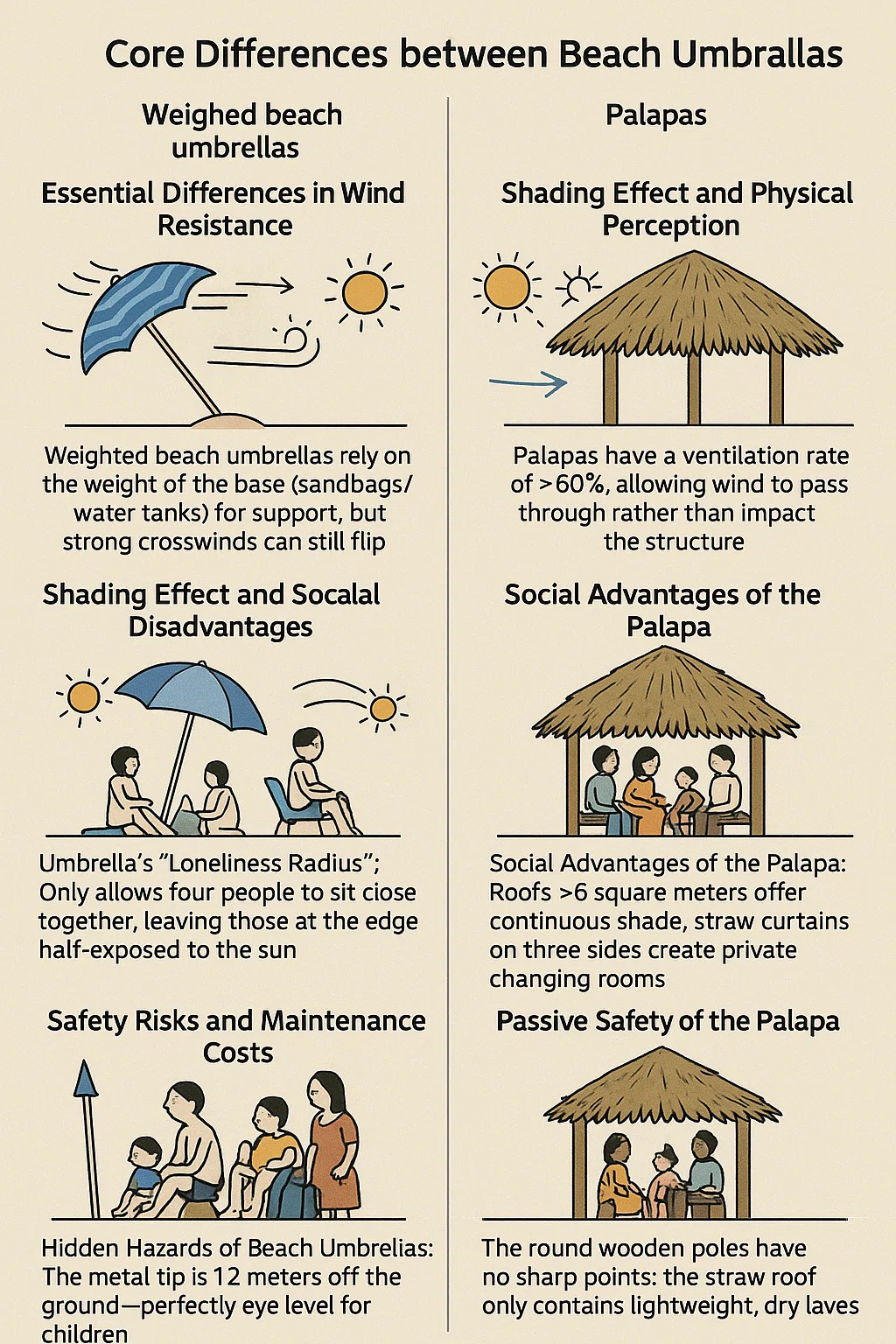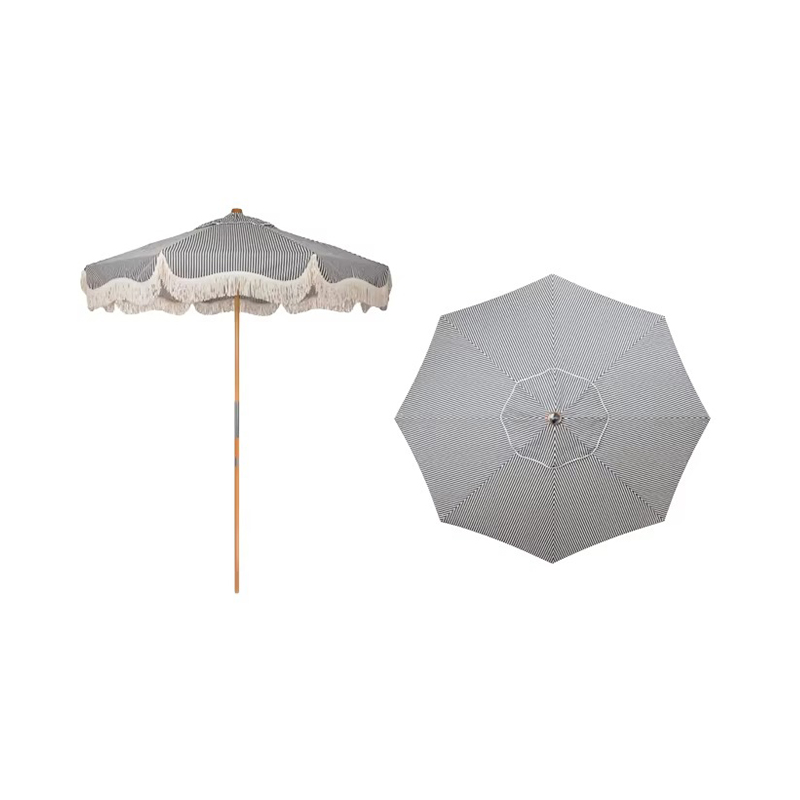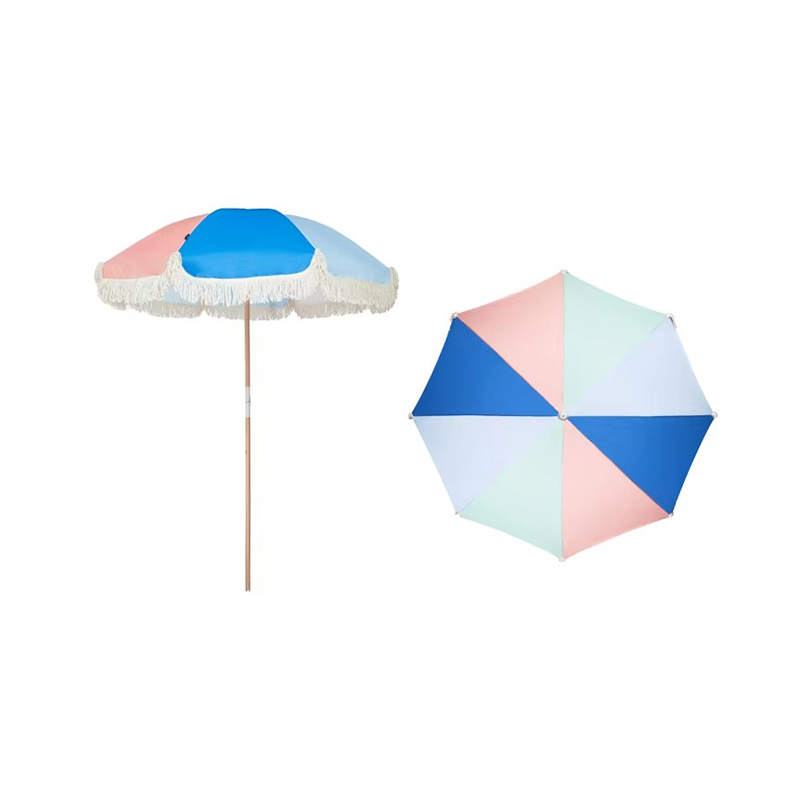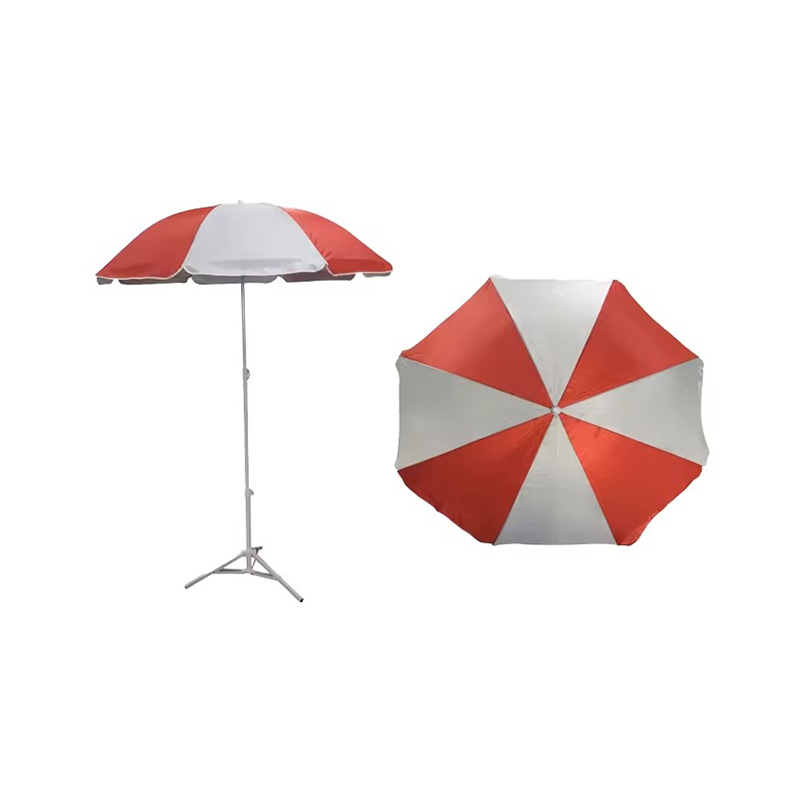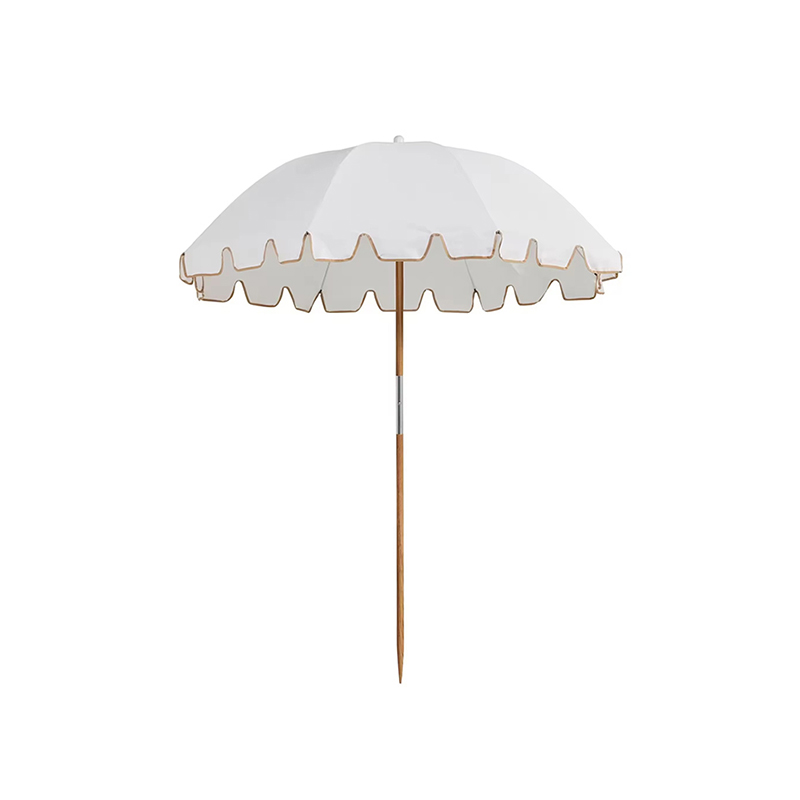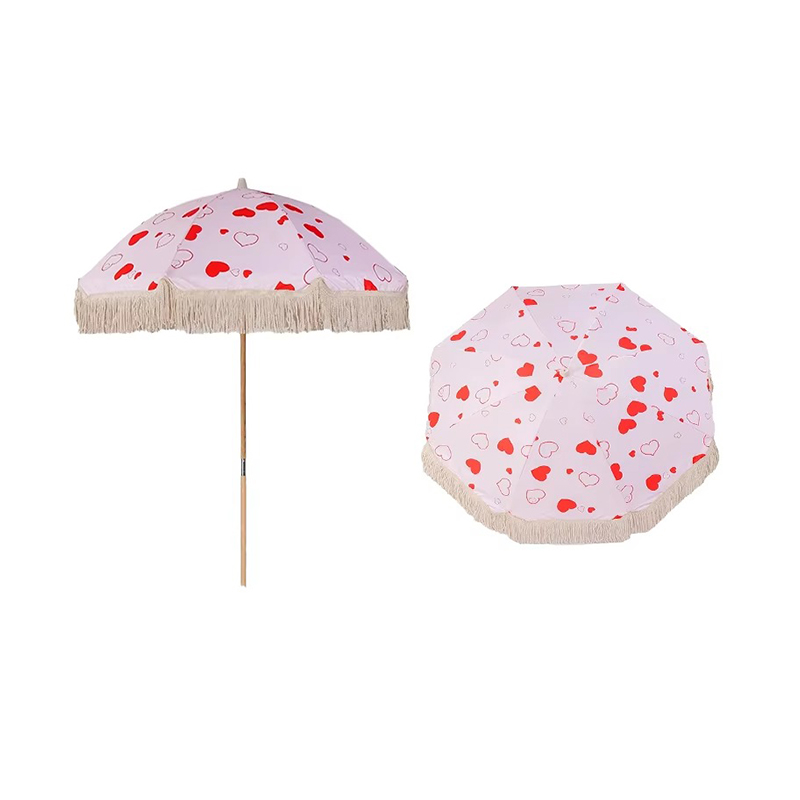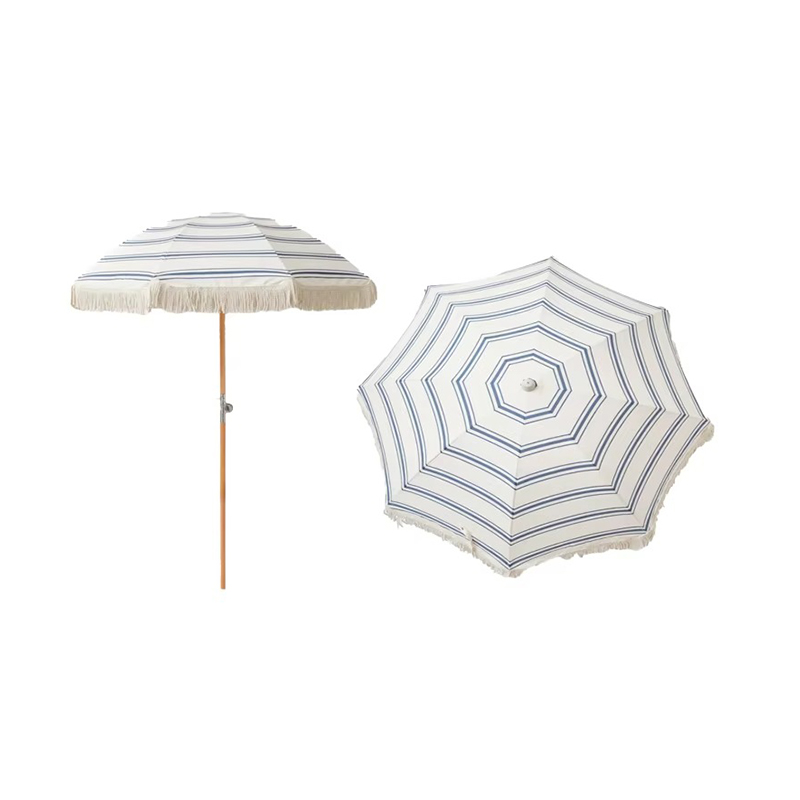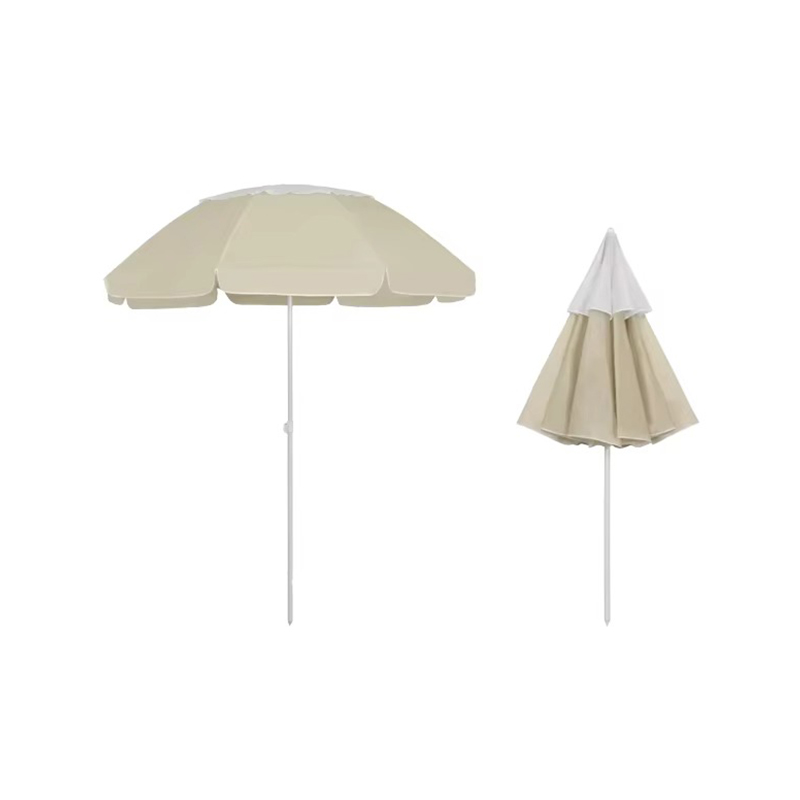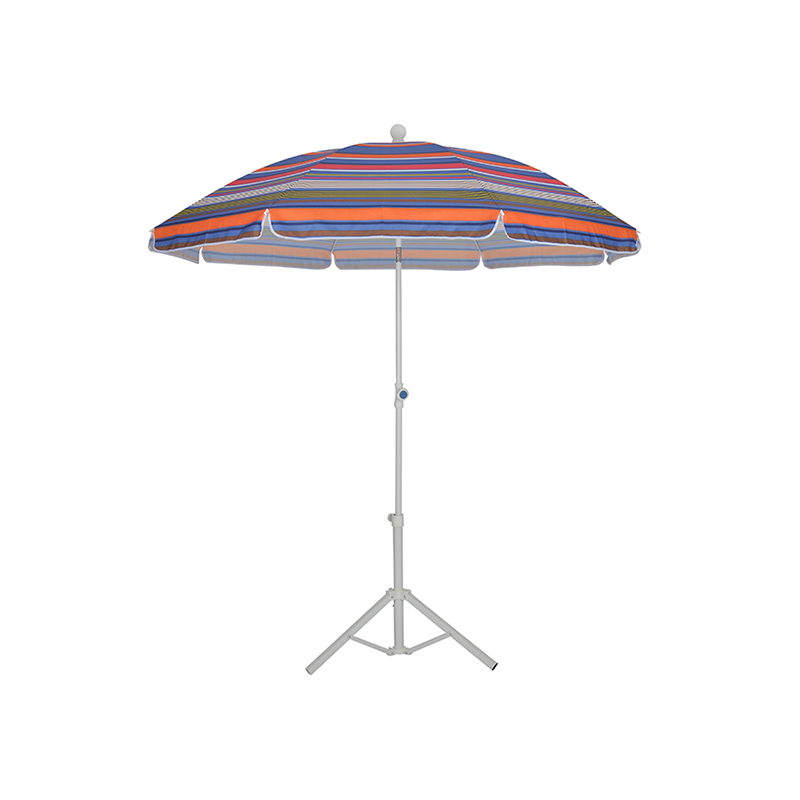What's wrong with just a weighted beach umbrella instead of a palapa?
Posted by Admin
The following is an analysis of the core differences between beach umbrellas and palapas:
1. Essential Differences in Wind Resistance
Weighted beach umbrellas: Rely on the weight of the base (sandbags/water tanks) for support, but strong crosswinds can still flip the umbrella—the umbrella acts like a sail, and the torque effect renders the support ineffective. A real-world example: A rib broke in a force 8 wind, and a metal pipe injured a child sitting next to it.
Palapas: The palm-leaf roof has a ventilation rate of >60%, allowing wind to pass through rather than impact the structure. Support columns are buried >1 meter underground, and wind resistance relies on the foundation, not the weight. Wind resistance logic: Similar to how bamboo bends in the wind.
2. Shading Effect and Physical Perception
Beach umbrella sun protection limitations: The shade under the umbrella shifts with the sun's angle, requiring frequent adjustments. The silver coating reflects heat radiation from the ground inefficiently, so even at noon when the sand surface is 60°C, the temperature under the umbrella can still exceed 40°C. Palapas offer natural cooling: Thickened palm fronds absorb heat rather than reflect it, maintaining a constant humidity level (measured at the beach, 3-5°C lower than under the umbrella); full sunshade requires no adjustment.
3. Spatial Functionality and Social Disadvantages
Umbrella's "Loneliness Radius": A 2.4-meter-diameter umbrella only allows four people to sit close together, leaving those at the edge half-exposed to the sun; there's no privacy, and items are easily lost and cluttered.
Social Advantages of the Palapa: Roofs >6 square meters offer continuous shade, accommodating three generations; straw curtains on three sides create private changing rooms, allowing surfboards/backpacks to be neatly organized by hanging from the beams.
4. Safety Risks and Maintenance Costs
Hidden Hazards of Beach Umbrellas: The metal tip of the umbrella is 1.2 meters off the ground—perfectly at eye level for children; strong winds can easily cause javelin throws (resulting in 2,000 such injuries annually in the US).
Passive Safety of the Palapa: The round wooden poles have no sharp points; the straw roof only contains lightweight, dry leaves, requiring only annual maintenance to replace 20% of the fallen leaves. 5. Shortcomings in Environmental Adaptability
Beach umbrellas face the "hard ground dilemma": Concrete surfaces require a water-filled base (>40L of water), which is labor-intensive to obtain. On rocky beaches, nails cannot be driven into the base, rendering it useless.
The ecological wisdom of the palapa: The base is filled with crushed stone, adapting to any terrain. Palm fronds are biodegradable and pollution-free, allowing for easy re-use after typhoons by collecting the scattered fronds.
